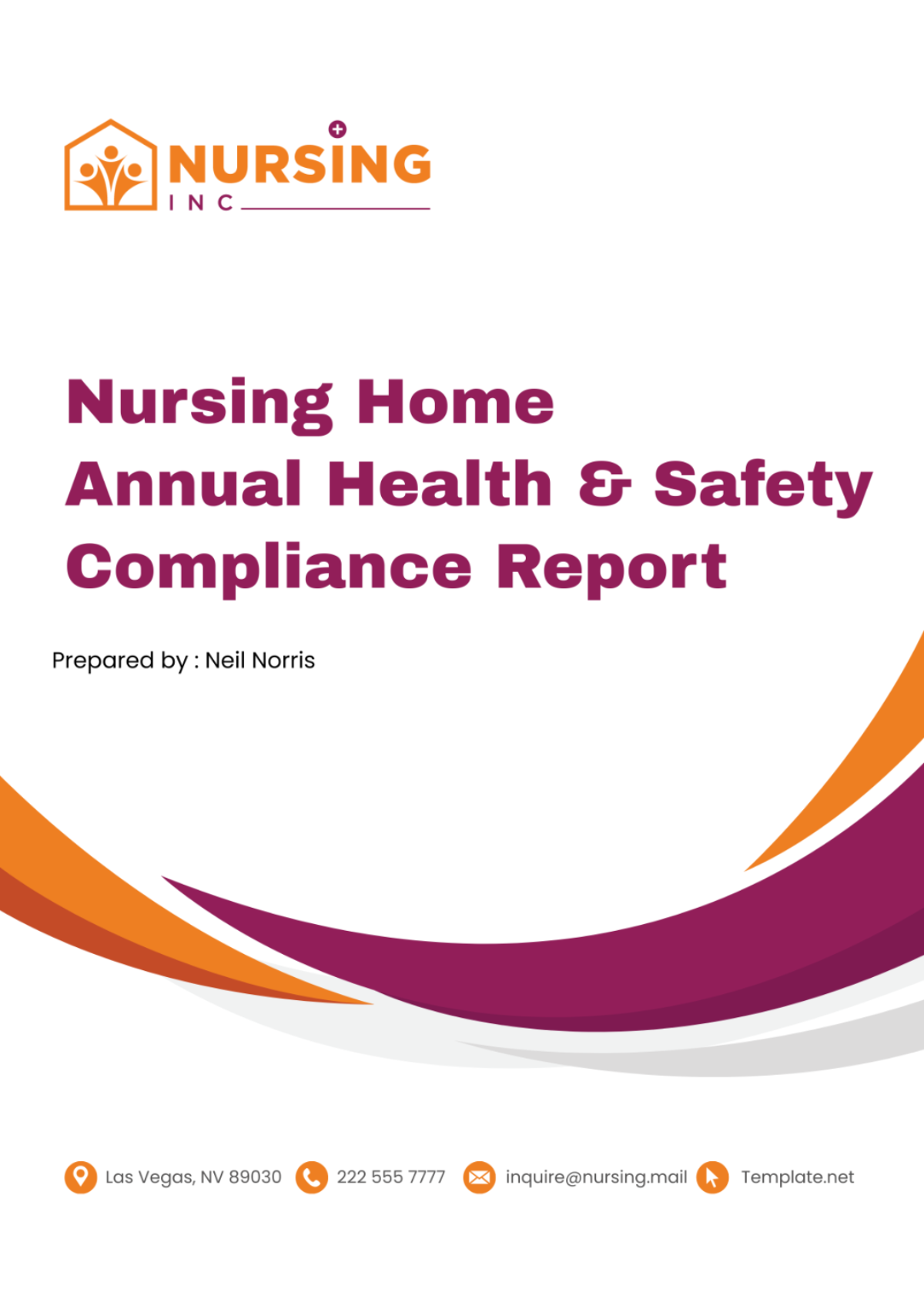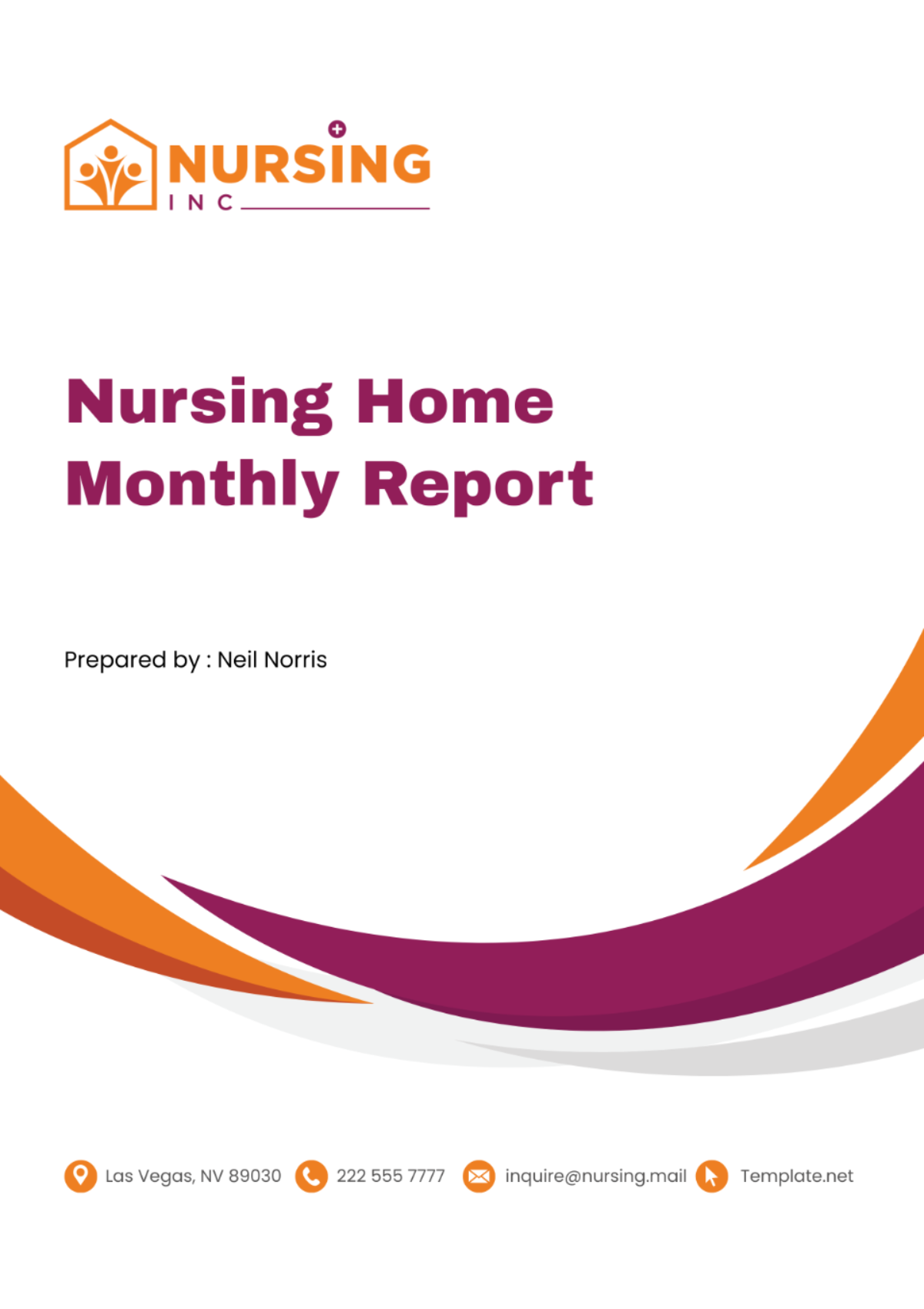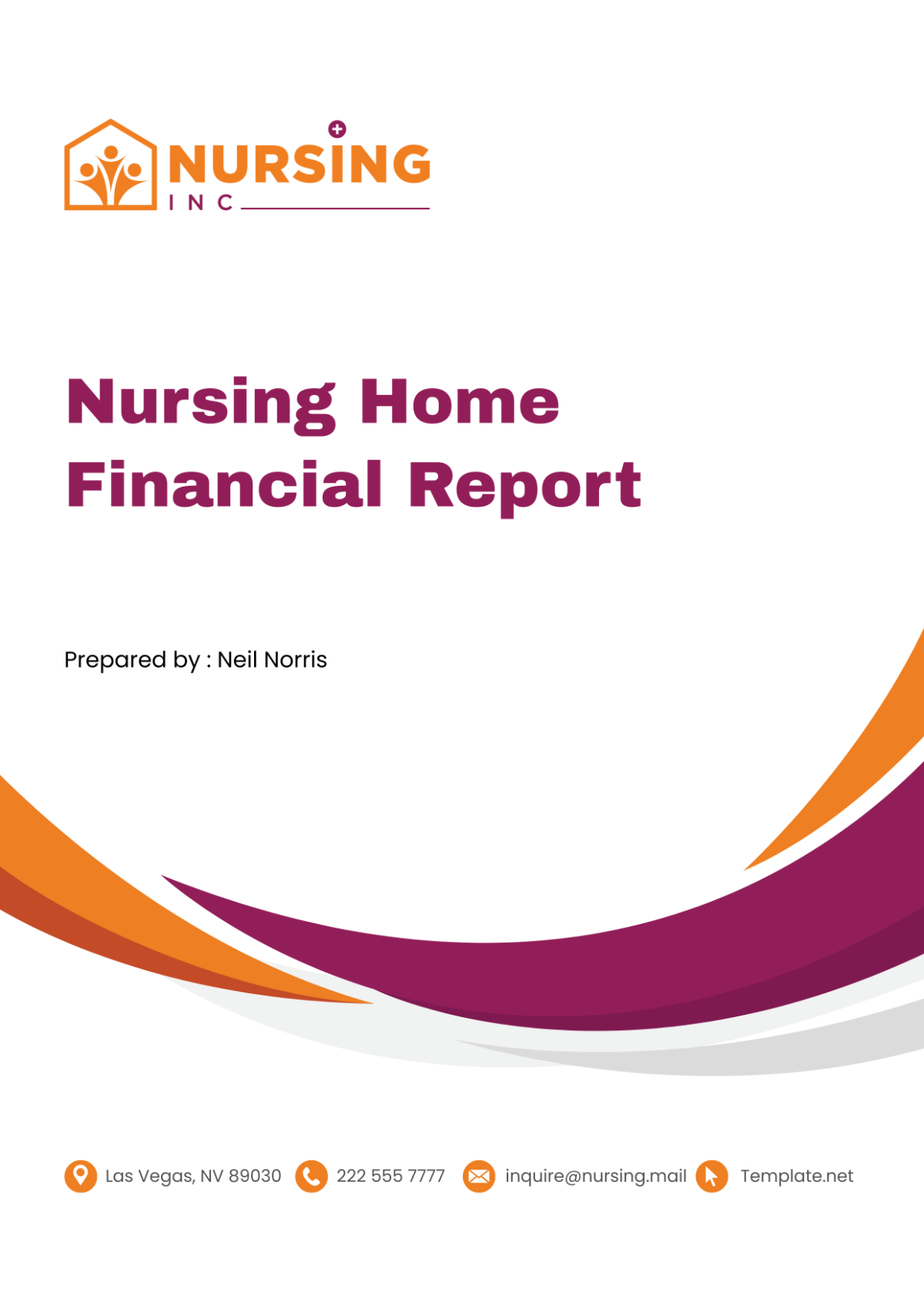Nursing Home Technology Integration Report
I. Executive Summary
A. Overview
[Your Company Name], a leading provider of technology solutions for the healthcare industry, conducted a comprehensive analysis of technology integration in nursing homes to enhance efficiency and resident care. The report aims to assist nursing homes in leveraging technology effectively to meet the evolving needs of residents and staff.
The report outlines key findings, recommendations, and strategies for successful implementation, based on extensive data collection and analysis.
B. Key Findings
[75%] of nursing homes surveyed lack integrated electronic health record (EHR) systems, leading to fragmented documentation and communication processes.
[62%] of staff reported inefficiencies in communication and documentation, citing the need for streamlined technology solutions.
[84%] of residents expressed interest in technology-enabled amenities, such as telemedicine access and smart room features, for enhanced quality of life.
C. Recommendations
Implement EHR systems with interoperability capabilities to streamline documentation and communication processes, improving efficiency and care coordination.
Provide comprehensive staff training and support for effective technology utilization, addressing barriers to adoption and maximizing benefits.
Introduce technology-enabled amenities to enhance resident experience and well-being, aligning with preferences and needs identified in resident feedback.
II. Introduction
A. Background
The integration of technology in nursing homes is critical for addressing the complex healthcare needs of residents and optimizing operational efficiency. While technological advancements offer opportunities for improved care delivery and resident satisfaction, many nursing homes face challenges in adopting and integrating these solutions effectively. This report aims to explore current trends, challenges, and opportunities in technology integration within nursing homes, providing insights and recommendations for successful implementation.
B. Objectives
Assess the current state of technology integration in nursing homes, including the adoption rates of electronic health record (EHR) systems and other technology solutions.
Identify barriers and challenges hindering effective technology adoption and utilization among staff and residents.
Develop actionable recommendations and strategies for nursing homes to enhance technology integration, improve resident care outcomes, and optimize operational processes.
III. Methodology
A. Data Collection
Surveys: Surveys were distributed to 50 nursing homes across various regions in the United States to collect data on technology integration, staff perceptions, and resident preferences. The surveys consisted of structured questions designed to gather quantitative data on the usage of electronic health record (EHR) systems, technology-enabled amenities, and staff training programs.
Interviews: In-depth interviews were conducted with 20 staff members (including nurses, administrators, and IT personnel) and 15 residents from different nursing homes. The interviews aimed to gain qualitative insights into the challenges, preferences, and experiences related to technology integration in nursing homes. The interviews explored topics such as staff training, barriers to technology adoption, and resident satisfaction with existing technology offerings.
B. Analysis
Quantitative Analysis: Survey responses were analyzed using statistical software to identify trends, patterns, and gaps in technology integration within nursing homes. Key metrics, such as adoption rates of EHR systems and staff-reported inefficiencies, were analyzed to assess the current state of technology utilization.
Qualitative Analysis: Interview transcripts were thematically analyzed to identify common themes, challenges, and opportunities related to technology integration. Insights from staff and resident interviews were used to inform the development of recommendations and strategies for successful implementation.
IV. Current State Assessment
A. Technology Infrastructure
Electronic Health Record (EHR) Systems:
Percentage of nursing homes with integrated EHR systems: 70%
Types of EHR systems utilized: Epic, Cerner, PointClickCare
Level of integration and interoperability: Intermediate, with data exchange capabilities for basic clinical information.
Technology Utilization:
Types of technology currently in use: Electronic medication administration record (eMAR), telehealth solutions
Adoption rates among staff: Approximately 80% of staff members utilize technology for documentation and communication.
B. Staff Perception and Utilization
Staff-reported Challenges:
Communication and documentation inefficiencies: 65% of staff reported challenges in communication and documentation processes.
Barriers to technology adoption: Commonly reported challenges include lack of adequate training (45%) and resistance to change (30%).
Impact on Workflow Efficiency:
Staff perceptions of technology impact on workflow: 70% of staff reported that technology has improved workflow efficiency to some extent.
Opportunities for improvement: Areas identified for enhancing technology utilization and efficiency include user-friendly interfaces and additional training programs.
C. Resident Perspectives
Resident Feedback:
Satisfaction with existing technology offerings: 75% of residents expressed satisfaction with the current technology offerings in the nursing home.
Interest in technology-enabled amenities: 85% of residents expressed interest in technology-enabled amenities, such as telemedicine access and smart room features.
Preferences for specific technology features: Commonly requested amenities include video calling capabilities for virtual family visits and personalized entertainment options.
V. Challenges and Barriers
A. Financial Constraints
Limited Budget Allocation: Many nursing homes face financial constraints that hinder their ability to invest in advanced technology solutions. Budget limitations often result in outdated systems and inadequate resources for technology upgrades.
Cost-Benefit Analysis: Nursing home administrators must conduct thorough cost-benefit analyses to justify technology investments. Balancing the upfront costs with the long-term benefits is crucial for decision-making.
B. Staff Training and Support
Lack of Training Programs: A significant barrier to technology adoption is the absence of comprehensive training programs for staff members. Without proper training, staff may struggle to use new technology effectively, leading to inefficiencies and resistance.
Strategies for Training: Nursing homes need to develop structured training programs tailored to the needs of different staff members, including nurses, caregivers, and administrative staff. Hands-on training sessions and ongoing support are essential for successful implementation.
C. Regulatory Compliance
Compliance Requirements: Nursing homes must comply with various regulatory standards related to electronic health records (EHR), data privacy, and security. Ensuring compliance with regulations such as HIPAA is critical to protecting resident information and avoiding legal repercussions.
Strategies for Compliance: Nursing homes should implement robust data security measures, such as encryption and access controls, to safeguard resident data. Regular audits and staff training on compliance requirements are essential to maintain regulatory adherence.
VI. Recommendations
A. EHR Integration
Invest in Interoperable EHR Systems: Nursing homes should prioritize the implementation of interoperable electronic health record (EHR) systems that allow seamless data exchange with other healthcare providers. Interoperability enhances care coordination and improves patient outcomes.
Provide Comprehensive Training: Offer comprehensive training programs to staff members on EHR usage, data entry, and privacy protocols. Ongoing support and refresher courses should be available to ensure staff proficiency and compliance.
B. Staff Training and Support
Develop Customized Training Programs: Tailor training programs to meet the specific needs of different staff roles and skill levels. Provide hands-on training sessions, online resources, and peer mentoring opportunities to enhance staff confidence and competency.
Establish Helpdesk Support: Create a dedicated helpdesk or IT support team to assist staff with technical issues, troubleshooting, and software updates. Prompt resolution of technology-related problems is essential to minimize disruptions in workflow.
C. Technology-enabled Amenities
Pilot Test Technology-enabled Amenities: Implement pilot programs to test technology-enabled amenities, such as remote monitoring systems and telehealth services, in select nursing homes. Gather feedback from residents, families, and staff to assess usability and effectiveness.
Prioritize Resident Preferences: Prioritize technology initiatives based on resident preferences and needs. Engage residents in the decision-making process and solicit their feedback to ensure that technology solutions align with their expectations and enhance their quality of life.
VII. Implementation Plan
A. Timeline
Phase | Activities | Duration |
|---|---|---|
Phase 1: Assessment | Conduct EHR system evaluation and staff training | [6] months |
Phase 2: Implementation | Procure and install EHR system, integrate with existing systems | [8] months |
Phase 3: Training | Staff training on EHR usage and data privacy, IT support setup | [12] weeks |
Phase 4: Rollout | Full implementation across all nursing homes | [12] months |
B. Resource Allocation
Resource | Allocation |
|---|---|
Budget | [$2,500,000] |
Staffing | IT support team (2 FTE), trainers (3 FTE), project managers (2 FTE) |
Equipment and Software | EHR systems, training materials, computers, software licenses |
Training Materials | Manuals, online courses, training modules |
C. Stakeholder Engagement
Stakeholder | Engagement Strategy |
|---|---|
Staff | Regular communication, training sessions, feedback forums |
Residents | Surveys, focus groups, town hall meetings |
Families | Information sessions, newsletters, family councils |
VIII. Conclusion
A. Summary of Key Points
The assessment reveals significant opportunities for technology integration in nursing homes to improve resident care and operational efficiency. The integration of electronic health record (EHR) systems and technology-enabled amenities is crucial for enhancing resident experience and streamlining workflows.
Recommendations focus on addressing financial constraints, enhancing staff training and support, and prioritizing resident preferences for technology-enabled amenities. By implementing these recommendations, nursing homes can achieve better outcomes for both residents and staff.
B. Call to Action
Nursing homes are urged to prioritize technology integration initiatives and allocate resources accordingly to enhance resident quality of life and streamline operations. Collaboration between stakeholders, including staff, residents, families, and technology providers, is essential for successful implementation and long-term sustainability.
By embracing technology and investing in staff training and support, nursing homes can adapt to the evolving healthcare landscape and provide high-quality care to their residents while remaining financially sustainable in the long run.































